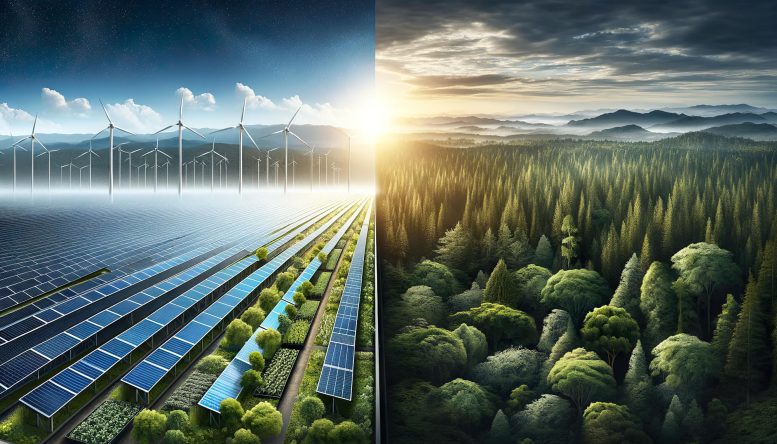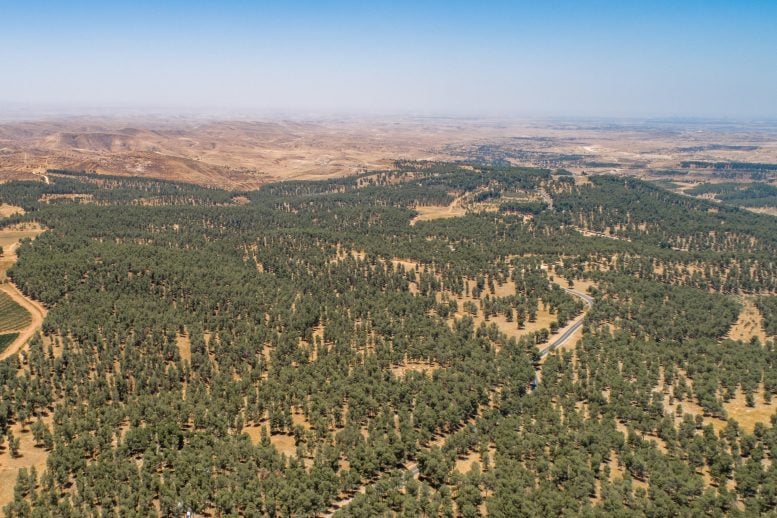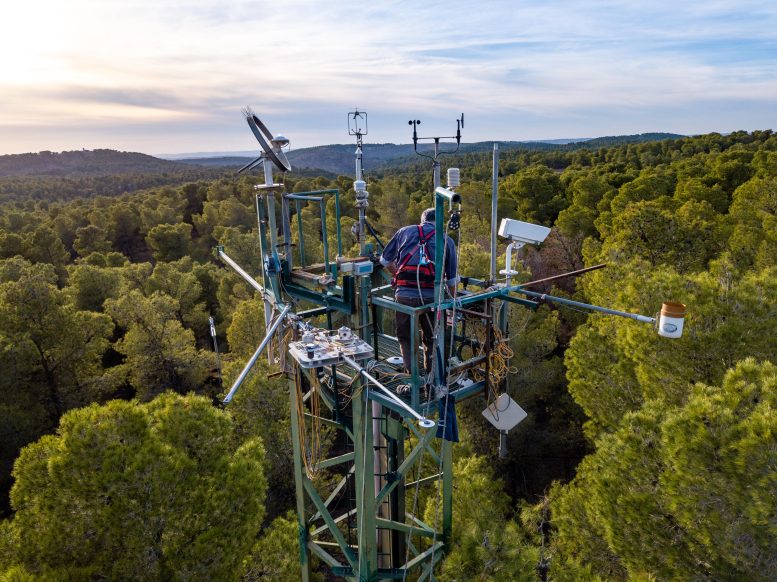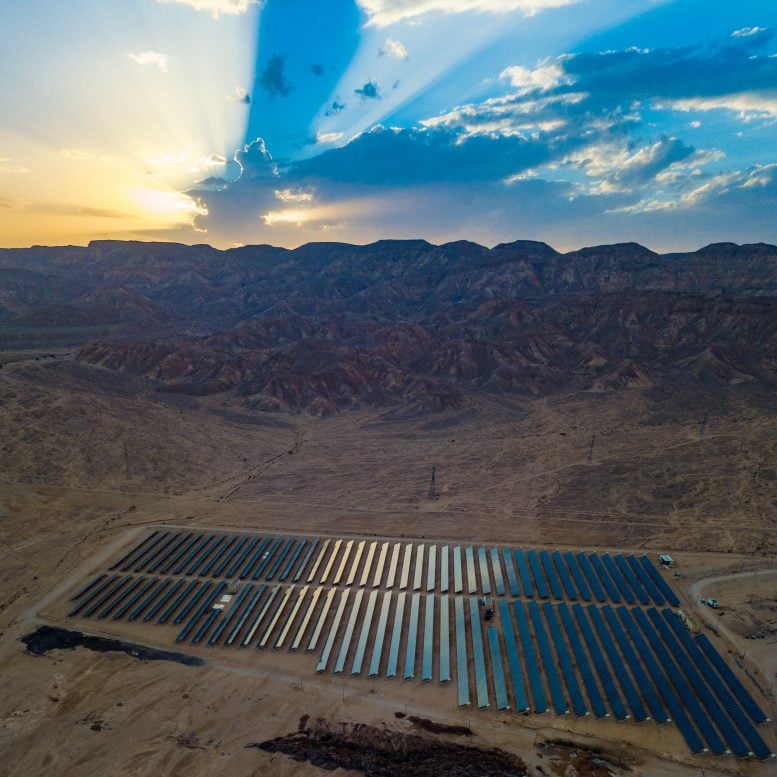
A study comparing the effectiveness of photovoltaic fields and afforestation in mitigating climate change has revealed that PV fields outperform afforestation, particularly in semiarid regions where they begin benefiting climate change mitigation in about 2.5 years—over fifty times faster than forests. While acknowledging the multiple benefits of forests, the study highlights the efficiency of PV energy in reducing the reliance on fossil fuels and mitigating climate change.
A study has found that photovoltaic (PV) fields are more effective than afforestation in mitigating global climate change. While forests sequester carbon to mitigate climate change, PV energy reduces reliance on fossil fuels. However, both approaches increase the global heat load due to their darker land surfaces, which absorb more heat.

Aerial view of Yatir Forest with the adjacent Negev desert in the background. Credit: Jonathan D. Muller
Investigating the Efficiency of PV Fields and Afforestation
Rafael Stern, Jonathan Muller, and colleagues investigated which land use—trees or solar panels—more quickly offsets the increased heat they produce due to surface darkening. The authors measured surface albedo at a solar field in a hyper-arid region in the Arava valley in Israel.

One of the authors working on the measurement system. Credit: Jonathan D. Muller
Afforestation data was measured at a research station at the Yatir forest at the northern edge of the Negev desert. The authors used this data to calculate the break-even time required to balance the positive radiative forcing due to reduced albedo and negative radiative forcing due to carbon emission suppression of PV power generation or carbon sequestration by forests.
Results and Implications
In semiarid land, photovoltaic fields break even and begin offering climate change mitigation benefits after about 2.5 years, which is more than fifty times faster than afforestation. In humid lands, the gap is not so wide, but solar panels continue to have the advantage.

Aerial view of a solar field in the Arava Valley. Credit: Jonathan D. Muller
The authors note that forests provide many benefits beyond climate change mitigation, including ecosystem, climate regulation, and social services.
Reference: “Photovoltaic fields largely outperform afforestation efficiency in global climate change mitigation strategies” by Rafael Stern, Jonathan D Muller, Eyal Rotenberg, Madi Amer, Lior Segev and Dan Yakir, 21 November 2023, PNAS Nexus.
DOI: 10.1093/pnasnexus/pgad352









The authors did not consider the climate impacts of the material mining, manufacturing, transportation, installation, replacement rate, maintenance, decomissioning, or landfilling of the solar panels. They also disregarded electricity “losses of between 5 and 40% in different storage options” as “a minor component and was not included”. Also disregarded was the carbon storage impact of the forestry product, wood. These limitations make their conclusion, that solar panels win, appear to be magical thinking.
Afforestation is really cool, when done efficiently. Solar panels are handy when other electricity supplies are unavailable.
Who writes this crap?
Besides all the pollution generated from creating solar panels, unlike trees and vegetation, they dont produce OXYGEN!